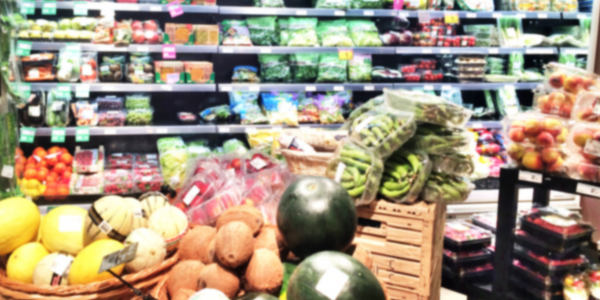公司规模
Large Corporate
地区
- America
国家
- United States
产品
- Tableau
技术栈
- Microsoft
实施规模
- Enterprise-wide Deployment
影响指标
- Productivity Improvements
- Revenue Growth
技术
- 分析与建模 - 实时分析
适用行业
- 零售
适用功能
- 销售与市场营销
用例
- 实时定位系统 (RTLS)
服务
- 数据科学服务
关于客户
The Dallas Cowboys, established in 1960, are a professional American football team based in Irving, Texas. The team has a large national following, as evidenced by the NFL record for the number of consecutive games at sold-out stadiums. This case study focuses on the Dallas Cowboys Merchandising division, which is responsible for all sales of the Dallas Cowboys brand. Industry estimates suggest that the Cowboys account for 20% of all NFL merchandise sales, reflecting their status as the world's most recognized sports franchise.
挑战
The Dallas Cowboys Merchandising division, led by COO Bill Priakos, was in need of a more comprehensive view of their data to increase profitability. Microsoft was chosen as the platform for this upgrade, along with several other sales, logistics, and ecommerce applications. The Cowboys anticipated that this new information architecture would provide the necessary analytics and reporting. However, this was not the case, leading to a search for a robust dashboarding, analytics, and reporting tool to fill this gap.
解决方案
Tableau and Teknion provided real-time reporting and dashboard capabilities that exceeded the Cowboys’ requirements. The Teknion team worked closely with data owners and users within the Dallas Cowboys to deliver all required functionality, on time and under budget. Tableau also worked closely with Teknion and the Cowboys throughout the project to ensure that the Cowboys could achieve their reporting and analytical goals in record time. As a result, the Dallas Cowboys can now monitor their complete merchandising activities from manufacture to end customer and not only see what is happening across the life-cycle, but also drill into why it is happening.
运营影响

Case Study missing?
Start adding your own!
Register with your work email and create a new case study profile for your business.
相关案例.

Case Study
Improving Production Line Efficiency with Ethernet Micro RTU Controller
Moxa was asked to provide a connectivity solution for one of the world's leading cosmetics companies. This multinational corporation, with retail presence in 130 countries, 23 global braches, and over 66,000 employees, sought to improve the efficiency of their production process by migrating from manual monitoring to an automatic productivity monitoring system. The production line was being monitored by ABB Real-TPI, a factory information system that offers data collection and analysis to improve plant efficiency. Due to software limitations, the customer needed an OPC server and a corresponding I/O solution to collect data from additional sensor devices for the Real-TPI system. The goal is to enable the factory information system to more thoroughly collect data from every corner of the production line. This will improve its ability to measure Overall Equipment Effectiveness (OEE) and translate into increased production efficiencies. System Requirements • Instant status updates while still consuming minimal bandwidth to relieve strain on limited factory networks • Interoperable with ABB Real-TPI • Small form factor appropriate for deployment where space is scarce • Remote software management and configuration to simplify operations

Case Study
Digital Retail Security Solutions
Sennco wanted to help its retail customers increase sales and profits by developing an innovative alarm system as opposed to conventional connected alarms that are permanently tethered to display products. These traditional security systems were cumbersome and intrusive to the customer shopping experience. Additionally, they provided no useful data or analytics.

Case Study
How Sirqul’s IoT Platform is Crafting Carrefour’s New In-Store Experiences
Carrefour Taiwan’s goal is to be completely digital by end of 2018. Out-dated manual methods for analysis and assumptions limited Carrefour’s ability to change the customer experience and were void of real-time decision-making capabilities. Rather than relying solely on sales data, assumptions, and disparate systems, Carrefour Taiwan’s CEO led an initiative to find a connected IoT solution that could give the team the ability to make real-time changes and more informed decisions. Prior to implementing, Carrefour struggled to address their conversion rates and did not have the proper insights into the customer decision-making process nor how to make an immediate impact without losing customer confidence.

Case Study
Ensures Cold Milk in Your Supermarket
As of 2014, AK-Centralen has over 1,500 Danish supermarkets equipped, and utilizes 16 operators, and is open 24 hours a day, 365 days a year. AK-Centralen needed the ability to monitor the cooling alarms from around the country, 24 hours a day, 365 days a year. Each and every time the door to a milk cooler or a freezer does not close properly, an alarm goes off on a computer screen in a control building in southwestern Odense. This type of alarm will go off approximately 140,000 times per year, equating to roughly 400 alarms in a 24-hour period. Should an alarm go off, then there is only a limited amount of time to act before dairy products or frozen pizza must be disposed of, and this type of waste can quickly start to cost a supermarket a great deal of money.

Case Study
Supermarket Energy Savings
The client had previously deployed a one-meter-per-store monitoring program. Given the manner in which energy consumption changes with external temperature, hour of the day, day of week and month of year, a single meter solution lacked the ability to detect the difference between a true problem and a changing store environment. Most importantly, a single meter solution could never identify root cause of energy consumption changes. This approach never reduced the number of truck-rolls or man-hours required to find and resolve issues.








